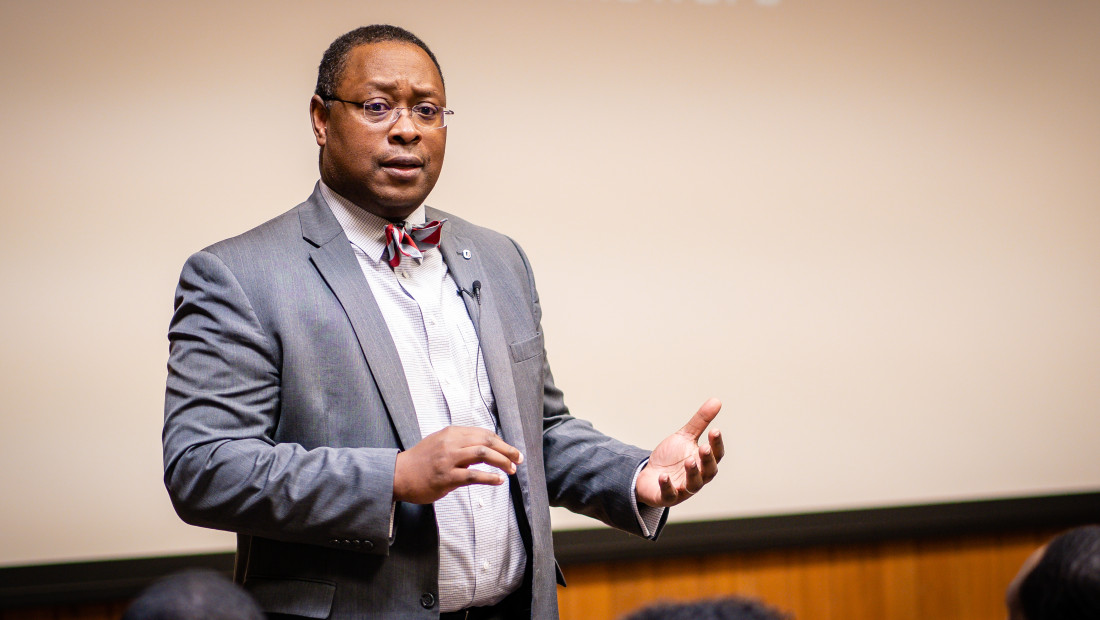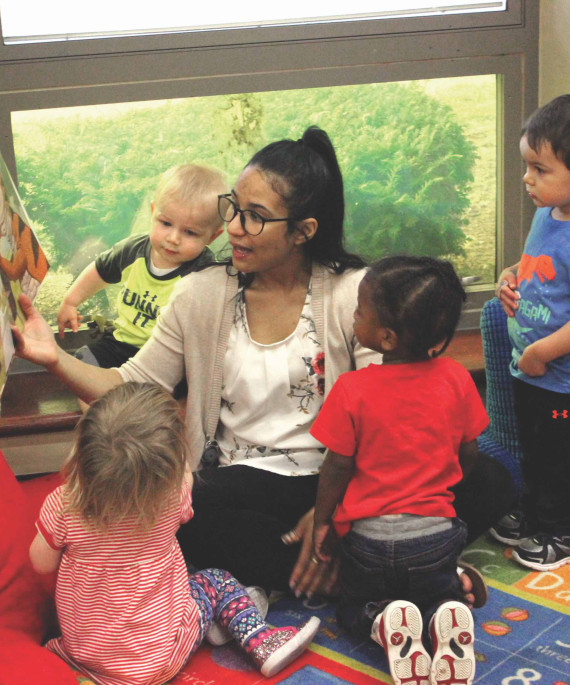
James L. Moore III received the American Educational Research Association’s Social Justice in Education Award.
Fiery disaster spurred James L. Moore III to do more
James L. Moore Jr. was tough as nails. He demanded excellence without excuses of his children, especially of his oldest.
So, when James III would hand his parents his awards — football and basketball championship trophies, academic recognitions, various other plaques — his mom and dad were low-key. They sat quietly. Smiled a bit.
“If you ever got that kind of smile, you want to give it to them all of the time,” said James L. Moore III, now vice provost for Diversity and Inclusion and chief diversity officer at The Ohio State University.
The den walls of the family brick-ranch home in Lyman, South Carolina, were crammed with trophies and plaques. The laurels bled into the hallway.
“My mom would dust them regularly and make my dad put them on the wall or fireplace mantel just so. She might even ask him to move them around,” he said.
Then catastrophe struck, in the form of a lightning bolt to the home’s electric utility box. Moore was away at Virginia Tech, earning his PhD. Fortunately, no one was home. The house burned to the ground.
All the family photos were lost. All the letters from across the decades. Treasured mementos and all those plaques and awards. Moore’s mother was devastated.
“I told her, ‘Don’t worry, Mama,’” he said. “‘I’ll get you more.’”
His mother passed away in 2011, but Moore didn’t stop making her proud. In the last month alone, he’s amassed three more honors.
Moore, also EHE Distinguished Professor of Urban Education, was awarded the American Educational Research Association’s Social Justice in Education Award, one of the association’s top honors, at its annual conference in Toronto April 6.
The award was established in 2004, on the anniversaries of the Brown v. Board of Education decision and the passage of the Civil Rights Act of 1964. It honors changemakers who advance social justice through education research and live out “the goal of linking education research to social justice,” the association said.
Last month, Moore received the Asa G. Hilliard Model of Excellence Award for his contributions to school counseling, gifted education, urban education, multicultural counseling/education, higher education and STEM education. He received it at the College Board’s A Dream Deferred conference, which brings together education professionals who strive to make a difference for African American students.
He also received a Future History Makers award from a Columbus radio station and in January was named among the nation’s top 200 university-based scholars “who did the most last year to shape educational practice and policy,” according to Education Week.
In addition to the latest American Educational Research Association honor, he has received multiple special interest group awards over the years for his research and scholarship on gender equity in education and mid-career contributions to multicultural education and counseling.
“Being recognized by the American Educational Research Association is truly special. It is something that I do not take for granted,” he said.
Admittedly, now that his mother is gone, he needs to work on a wall of his own, Moore said. His wife has suggested as much.
“I recognize I don’t have the right to complain if nothing else goes right for me. It has been a wonderful ride,” he said. “But I want more — not more for myself.”
Neither of his parents were able to get a college education. “Because of the times in South Carolina, they were stripped of it,” he said.
He sees their story play out in the lives of young, black students still. He wants that to change. Ohio State is a place where he can achieve that shift “at scale,” he said. The idea — achieving true access and equity in education — drives him to keep pushing every day.
“I want to be a part of something that is really bigger than me. I can’t do anything for my parents,” he said, “but for somebody else….”
So make some more space to tack another plaque onto the wall, Mrs. Moore. There is still work left to do.




